Environmental Factors That Contribute to Mold Growth
If you live in Dallas, TX, you've probably encountered mold growing in different areas of your home. Mold growth is more than a nuisance; it can mean severe implications for your health and the structural integrity of your home.
Below we'll detail the environmental factors that promote mold growth, how light levels and temperature contribute, and provide recommendations to prevent mold growth in your home. We'll also provide suggestions for how to treat mold growth when it does happen.
Why is Mold Growing in My Home?
Mold growth can only happen under environmental conditions that can create a favorable breeding ground for sports to take root. Identifying areas that produce these conditions in your home is your first step to ensuring you can slow or prevent mold growth. Once you understand what causes mold growth, you can be proactive in preventing it from happening again.
What Are Common Environmental Factors for Mold Growth?
- High Humidity and Moisture Levels: Mold loves moisture and humid environments, especially those with about 60% relative humidity. Bathrooms, basements, and crawl spaces are all susceptible to mold growth. In these areas, restricted ventilation will only exacerbate the situation.
- Poor Ventilation and Airflow: Areas that lack proper ventilation also contribute to building humidity and moisture. Further, these areas can trap mold and mold spores, making it more likely for them to grow there. Attics, closed-off rooms, and other areas with stagnant air provide the perfect place for mold to grow.
- Water Leaks and Plumbing Issues: Leaks in your roof, pipes, and windows are another significant source of mold growth. The moisture produced by these leakages stimulates mold growth by producing the damp conditions they need. To make matters worse, leaks occurring in isolated areas can go unnoticed for significant portions of time, making the situation worse.
- Condensation And Inadequate Insulation: Areas where warm moist air comes into contact with cool surfaces, lead to the formation of condensation. This is particularly common in areas with poor insulation, such as windows and walls. These parts of the home create a perfect place for condensation to form and, thus, for mold to grow.
- Organic Materials and Food Sources for Mold: Like most things, mold needs a food source to grow and thrive. Mold feeds on organic matter, such as that found in carpets, drywall, wood, and the dust that forms around your home. Plant-based materials are particularly susceptible to mold colony formation.
Can Indoor Temperature Impact Mold Growth?
Temperature cannot produce mold growth independently, but it can affect how fast it grows and spreads. The best temperatures for mold are between 77°F (25°C) and 86°F (30°C). It can grow in colder temperatures, though it will do so slowly. Keeping your indoor temperature consistent and limiting significant fluctuations will keep mold growth at bay.
Does Mold Need Light To Grow?
Mold doesn't require light to grow, allowing it to thrive in dark and poorly lit areas. Areas combining these features with low-traffic areas are excellent places for a mold colony to take root. These areas make them harder to spot, allowing them to proliferate unnoticed. Situations like these typically require the help of a team of professionals like those at FDP Mold Remediation of Dallas. Mold spores can also go dormant until suitable conditions are available to grow.
Preventing Mold Growth: Best Practices and Tips For Dallas Homeowners
The most important part of managing mold growth in your home is prevention. These mold-fighting tips will help you take steps to prevent the onset of problems in your home.
- Improve Ventilation: Ensure that the air in your home is constantly circulating, especially in areas of high humidity. Turn on or install exhaust fans in the laundry, kitchen, and bathrooms, and keep the windows cracked to help ventilate the room.
- Fix Water Leaks: Make sure you address any water leaks in your home as quickly as possible. The longer they remain, the more you risk developing a mold colony in these damp areas.
- Proper Insulation: Check your insulation regularly to protect your home from cold and condensation. Insulation will help maintain a regulated temperature in your home and reduce your risk of moisture buildup.
- Use Mold-Resistant Materials: Use mold-resistant paint and drywall in your home. These will reduce the risk of mold forming.
- Clean Regularly: Keeping areas clean will reduce the likelihood of moisture building up. This is critically important in high-humidity areas. You also want to remove any mold-friendly materials damaged by water, such as upholstery or carpet.
- Reduce Clutter: Areas that are cluttered provide ample opportunity for mold to grow. These areas can trap moisture, provide dark warm areas, and are quite challenging to clean. Combined, these elements turn cluttered areas into perfect breeding grounds for mold.
What Humidity Should A Room Be To Prevent Mold?
Preventing mold growth can best be accomplished by ensuring the humidity levels in your home are not conducive to its growth. You must maintain your humidity level at a point below 60%. A hygrometer is used for measuring humidity levels and can be picked up at hardware stores and online. It's essential that you use dehumidifiers to keep indoor humidity levels at appropriate levels.
Do Dehumidifiers Remove Mold?
While dehumidifiers play a crucial role in making your home have an environment that isn't conducive to mold growth, they don't prevent it on their own. By maintaining the level of humidity in your home between 30%-50%, you'll take a huge step towards avoiding mold formation. Just be aware that dehumidifiers will not resolve an active mold problem. For that, you'll need the help of professionals like FDP Mold Remediation.
Call FDP Mold Remediation of Dallas Today
Whether you've identified an active mold problem, have moved into a new home, or are being proactive, call the FDP Mold Remediation of Dallas professionals at 469-210-8669. With our help, you'll be able to identify mold risks in your home, address areas of high humidity, and identify leaks and other factors that can lead to mold formation. Don't wait until mold grows to get help. Get your home inspected by our specialists today!





